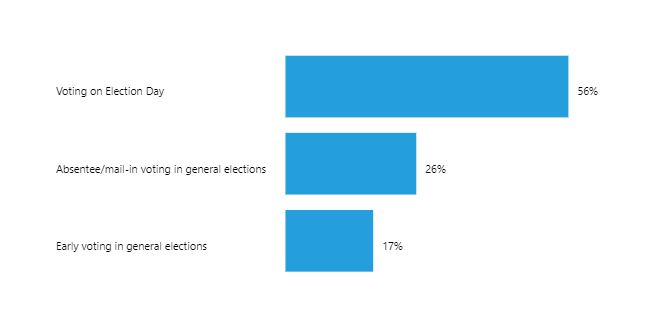Health
How COVID-19 is changing primary voting—and the November election

Update: The Centers for Disease Control and Prevention (CDC) and the Food and Drug Administration (FDA) halted the use of the Johnson & Johnson COVID-19 vaccine at federally administered sites on April 13, after six cases of blood clots found in women who used the vaccine.
One of the emergency use requirements for each of the three approved COVID-19 vaccines was that healthcare providers must report certain symptoms after vaccination using the federally run Vaccine Adverse Event Reporting System (VAERS).
The system, set up in 1990, is intended to monitor side effects following vaccinations of any type. Individual VAERS case data through February 26 — when the number of total COVID-19 doses administered was about 70.5 million — shows just over 25,000 reports of adverse events following vaccinations.
The Centers for Disease Control and Prevention (CDC) has also released reporting using more recent VAERS data not yet available to the public. The data as of March 8 — by which point over 92 million doses had been administered — includes 1,637 reports of death following vaccination. After review, the CDC concluded that there was no evidence linking any of those deaths to the COVID-19 vaccines.
In a separate February 26 report examining the first month of vaccinations, the CDC noted that the most frequently reported symptoms were headaches, fatigue, and dizziness.
There were 4.5 cases of anaphylaxis (severe allergic reactions) per million doses administered. For comparison, there are 1.4 anaphylaxis cases per million flu vaccine doses administered and 9.6 cases per million herpes vaccine doses administered. According to the report, "no unexpected patterns of reactions or other safety concerns have been identified during early monitoring."
During the first month of vaccinations, federal health officials received about one report of adverse events for every 2,000 doses administered.
The report acknowledges some of the limitations of VAERS, including the potential of reporting bias and underreporting. For example, people may be less likely to report side effects unless the symptoms are unexpected or require medical attention.
The CDC has also created a smartphone-based COVID-19 vaccine tool called v-safe, which allows vaccinated Americans to directly contact the agency about side effects. According to the CDC, someone from the agency may follow up for more information. The agency says the tool is not intended as a source of medical advice.
Newsletter
Keep up with the latest data and most popular content.